Below our latest newsletter. If you want to receive updates in your email, you can subscribe via the form on the right.
Citclops Blue Info days great success!
The Blue Info days in Wilhelmshaven (15/16 March 2014) have been a great success. In total a number of 36 participants have been actively particpating in the discussions and fieldwork. The fieldwork including tests of the Citclops App to collect water colour data, as well as on the spot measurements of water transparency and fluorescence.
The blue print of these days will be used more in the project, to allow further citizen involvement also in other working areas.
We thank the participants and the organisors (ICBM - University Oldenburg) for their contributions.

Citclops @ European Maritime Day 2014 in Bremen
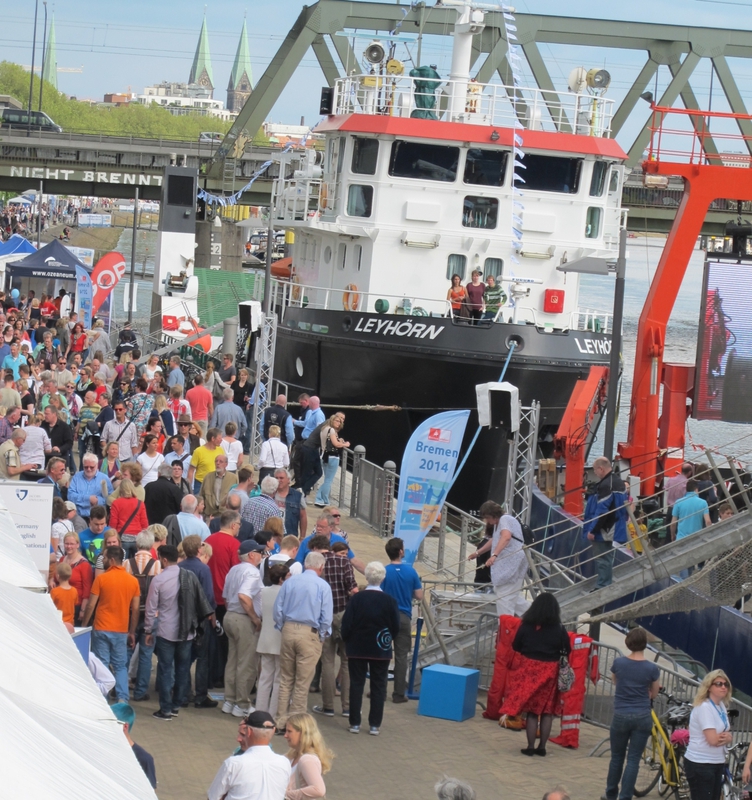 Under the best sunny conditions, we participated at the European Maritime Day 2014 - which in fact is really Maritime Days - in the hanseatic city of Bremen, Germany. On a public day on Sunday 18 May, scientific topics and research vessels were presented by multiple maritime research institutions along a Research Alley. Here, also Citclops´ aims, the idea of citizen observatories, our smartphone apps and ways to engage in environmental monitoring were brought to citizens from all over the world in a “Citizen Science” area, kindly shared with us by the team of the Ocean Sampling Day, and we thank the team and all the people that visited us there to learn more about our project.
Under the best sunny conditions, we participated at the European Maritime Day 2014 - which in fact is really Maritime Days - in the hanseatic city of Bremen, Germany. On a public day on Sunday 18 May, scientific topics and research vessels were presented by multiple maritime research institutions along a Research Alley. Here, also Citclops´ aims, the idea of citizen observatories, our smartphone apps and ways to engage in environmental monitoring were brought to citizens from all over the world in a “Citizen Science” area, kindly shared with us by the team of the Ocean Sampling Day, and we thank the team and all the people that visited us there to learn more about our project.
From 20 – 21 May, workshops and conference session provided space for discussions on future efforts towards blue growth and its limits. The importance of citizen engagement and environmental stewardship were often cited during these days. We are glad to provide within Citclops easy measurement techniques for citizen scientists and space for discussion, which offer the general public a chance to get engaged in environmental monitoring and stewardship. The next EMD will take place in Piraeus, Greece in 2015.
First release of the Citclops App
The quality of natural waters can be estimated via their colour and transparency, since these optical properties are affected by the substances that are either suspended or dissolved in it. A new App was developed by the Citclops consortium to estimate the colour of water bodies by citizens, based on the comparison of the colour of the water to a 21 colour-scale displayed on the screen of the smartphone. The user takes a picture of the observed water surface, with the sun on his/her back if it’s a clear day, then cuts the part of the image that resembles most to the real colour of the water. The scale is then displayed on the screen and the user can compare the colours on the scale to the colour of the water, either by looking at the picture just taken or by looking at the water surface directly. Then, a questionnaire on the weather conditions needs to be filled in.
If the user has a Secchi disk, then he/she is asked to introduce the secchi depth, an indicator of water transparency, and to compare the colours of the scale to the colour of the water observed on top of the Secchi disk (at ½ the Secchi disk depth).
This App is called ‘Citclops’ and can already be downloaded for Android on Google Play. It will be available for Iphone on the Apple store at the end of July.

How to send Citclops data from a mobile device with Internet connection
1. Connect your mobile device to a Wi-Fi network or use a mobile-data connection.
2. Install the File Manager app by Rhythm Software from Google Play [https://play.google.com/store/apps/details?id=com.rhmsoft.fm&hl=es].

3. Check for pending data to send. Open the File Manager app. Open the folder .Citclops. Check if there are files in the FUScale folder (In the figure below there is an item in [FUScale].) These are the files pending to be sent (in this case, just one file).
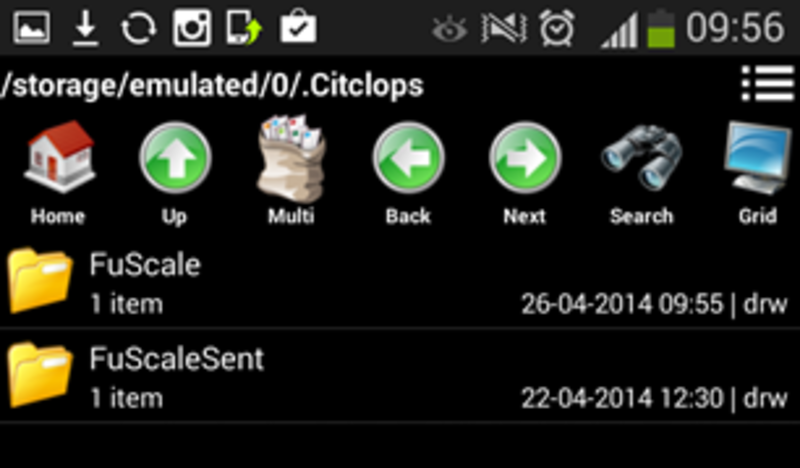
4. Open the Citclops app and take photos of the colour of the water. Leave the app open for about 2 minutes, so that the photos are sent.
5. Check that the photos were sent. Return to the File Manager app. Check that there are no files in [FUScale]. If this is the case, the files are now in [FUScaleSent] (in zip format). If this is not the case, you should try to open the Citclops app one more time.

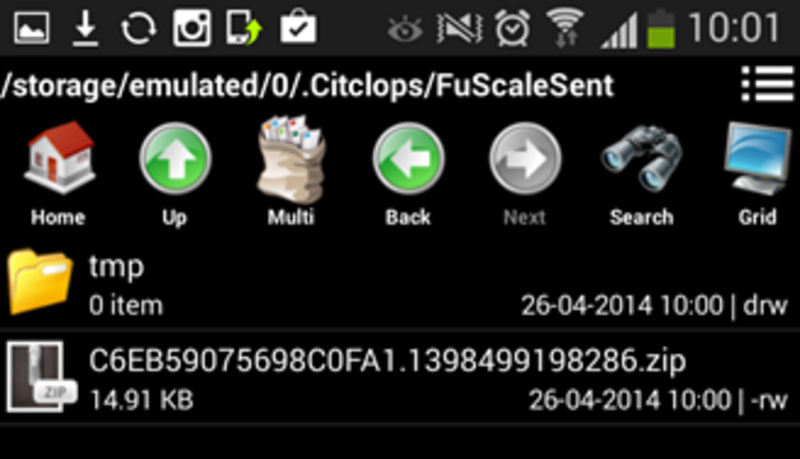
Thanks!
Experiences down under
Citclops’ scientist Hans van der Woerd presently visits Australia for several months. He has been invited by scientist from the leading research institute CSIRO. The goal is to exchange ideas and knowledge on the integration of high-tech environmental monitoring (like remote sensing) and low-cost environmental monitoring by the public (like smart phones). Citclops concepts could lead to continent wide citizen’s involvement in water quality assessment, especially in remote inland and coastal waters of Australia.
The experience will provide Citclops with ideas to introduce the App and service at a continental scale and for water types that are very different from the European test sites. Australian inland waters measurements with the App will be part of this visit. A first exploration was made in the Shaolhaven estuary at the New South Wales coast near Nowra.
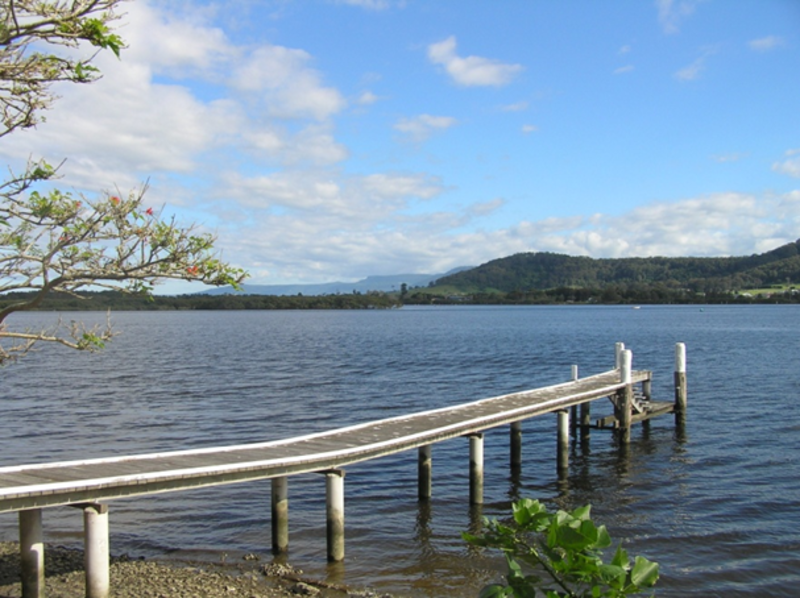
Brackish waters with mangrove and sea grass at a pier on Wolagong island. Photo: Hans van der Woerd.
In May 2014 Hans will present the Citclops project in Canberra, Brisbane and Darwin.
Citclops @ GEO-X summit in Geneva
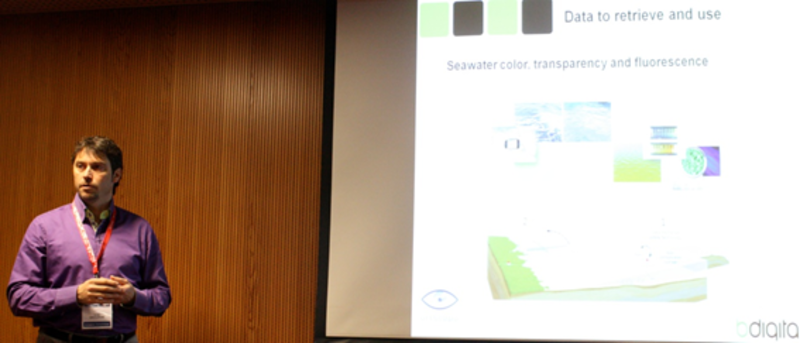
Citclops is one of the Citizens' Observatories (COs), five currently running FP7 projects funded under the topic ENV.2012.6.5-1 "Developing community-based environmental monitoring and information systems using innovative and novel earth observation applications", which started in autumn 2012. All projects aim to develop novel technologies and applications in the domain of Earth Observation, exploiting the capabilities offered by portable devices (smart phones and tablets), to enable an effective participation by citizens in environmental stewardship based on broad stakeholder and user involvement in support of both user community and policy makers.
Liaison among the projects under the topic has led to the development of a common web portal [http://citizen-obs.eu] where all five CO-related projects can share information, exchange knowledge and advertise conferences. It is a central hub for communication within the five projects and about them. Furthermore, we have also established a presence on Facebook, a platform which provides a common outlet for any CO-related activity. The Citizens’ Observatories Facebook page [https://www.facebook.com/int.cit.obs] encourages the promotion of any CO-related activity. It is open to SMEs that may want to promote new technologies, as well as projects or other initiatives that have a CO-related component.
On January 15-16, 2014, Citclops has participated in the 10th GEO Plenary & Geneva Ministerial Summit alongside our sister projects. The summit brought together the Group on Earth Observations (GEO) to discuss the progress of the Global Earth Observation System of Systems (GEOSS). The aim of GEOSS is to provide decision-support systems to a variety of users. All information shall be made available through the Internet, allowing for users easy access to existing and planned observing systems all around the world.
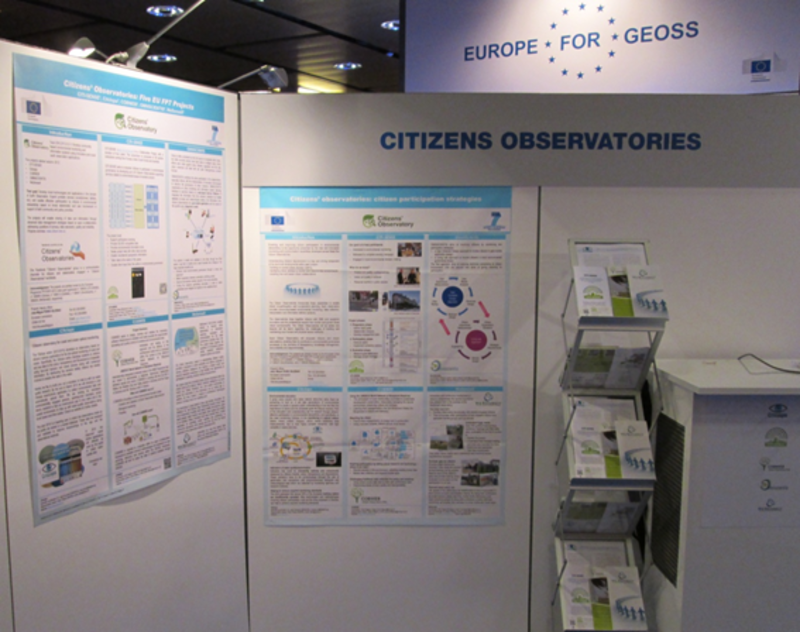
The five projects bring together state of the art technologies and open-communication capabilities. Two kinds of novel technologies applications have been developed:
- In-situ sensor-networks: environmental sensors constantly become smaller, cheaper and smarter. Scientific data improve our understanding and help to reduce environmental impact and risk exposure.
- Mobile applications: citizens are enabled to collect and contribute to environmental governance. Aiming to reach the largest number of people, these applications run in most kinds of mobile devices.
Posters about Citclops and all other sister projects were presented and, together with our sister projects, a Citclops's representative contributed with an oral presentation. Further collaboration between the CO projects is now taking shape:
- Citclops will be on the 12th of June, together with other COs, at the European-Commission--sponsored 8th GEO European Projects Workshop (GEPW-8), which will take place in Athens, Greece, hosted by the Greek GEO Office - National Observatory of Athens and co-organized by the Mariolopoulos-Kanaginis Foundation for the Environmental Sciences.
- a joint workshop in late 2014 is under preparation.
Upcoming citizen´s training in Germany
1) 19 & 20 June 2014, Wilhelmshaven, Germany: Senior academy at the UNESCO Weltnaturerbe Wattenmeer Besucherzentrum Wilhelmshaven. Application via Wadden Sea visitor centre (http://www.wattenmeer-besucherzentrum.de/)
2) 21 June 2014, Wilhelmshaven: Students training and Ocean Sampling Day
3) TBD, Aurich, Germany: 2 day training during Sea kayaking week (Seekajakwoche 2014) of German Salzwasser Union, 1. - 10. August 2014. Application via Salzwasser Union (http://www.salzwasserunion.de/Seekajakwoche.38.0.html)


 Under the best sunny conditions, we participated at the European Maritime Day 2014 - which in fact is really Maritime Days - in the hanseatic city of Bremen, Germany. On a public day on Sunday 18 May, scientific topics and research vessels were presented by multiple maritime research institutions along a Research Alley. Here, also Citclops´ aims, the idea of citizen observatories, our smartphone apps and ways to engage in environmental monitoring were brought to citizens from all over the world in a “Citizen Science” area, kindly shared with us by the team of the Ocean Sampling Day, and we thank the team and all the people that visited us there to learn more about our project.
Under the best sunny conditions, we participated at the European Maritime Day 2014 - which in fact is really Maritime Days - in the hanseatic city of Bremen, Germany. On a public day on Sunday 18 May, scientific topics and research vessels were presented by multiple maritime research institutions along a Research Alley. Here, also Citclops´ aims, the idea of citizen observatories, our smartphone apps and ways to engage in environmental monitoring were brought to citizens from all over the world in a “Citizen Science” area, kindly shared with us by the team of the Ocean Sampling Day, and we thank the team and all the people that visited us there to learn more about our project.






